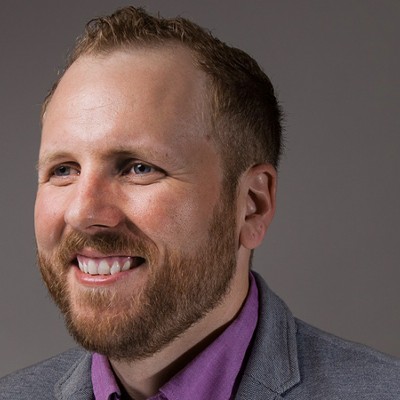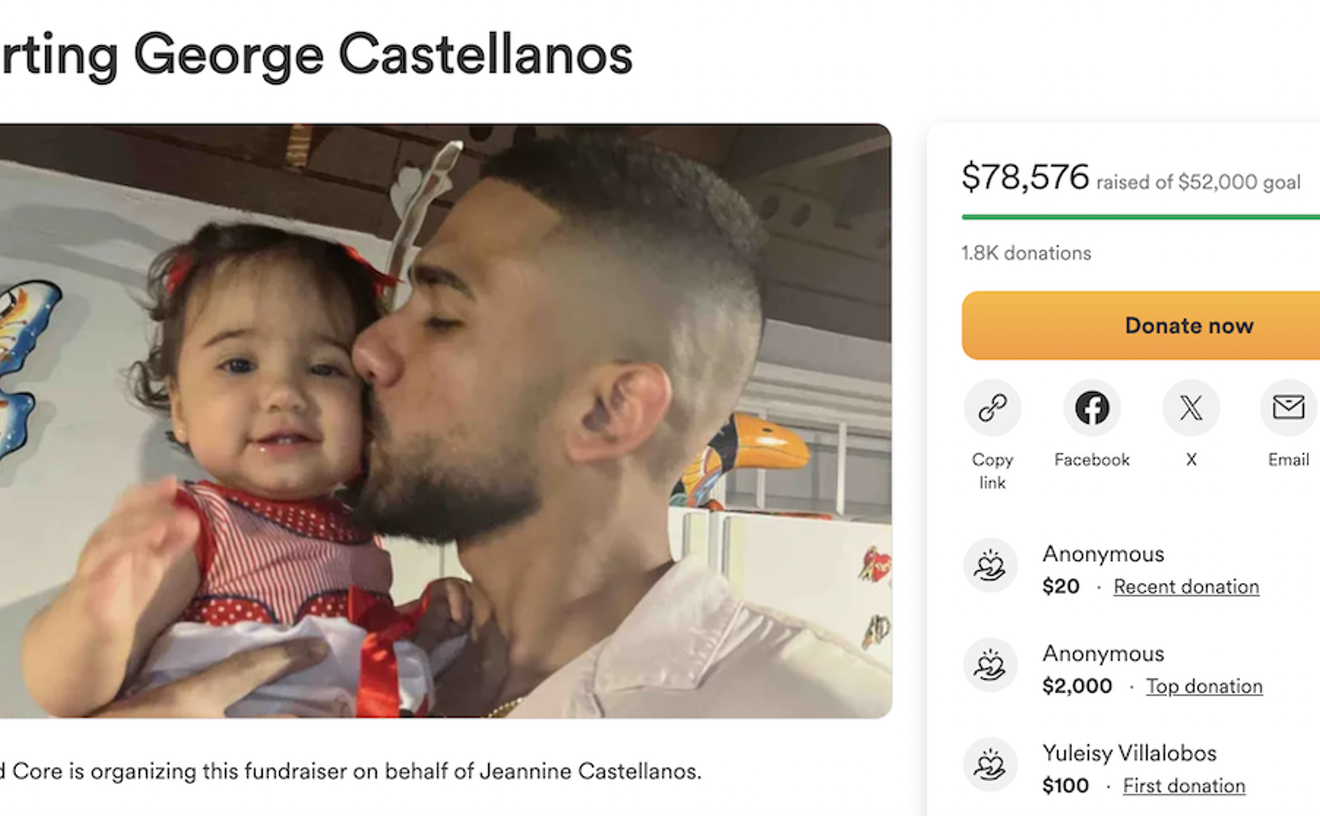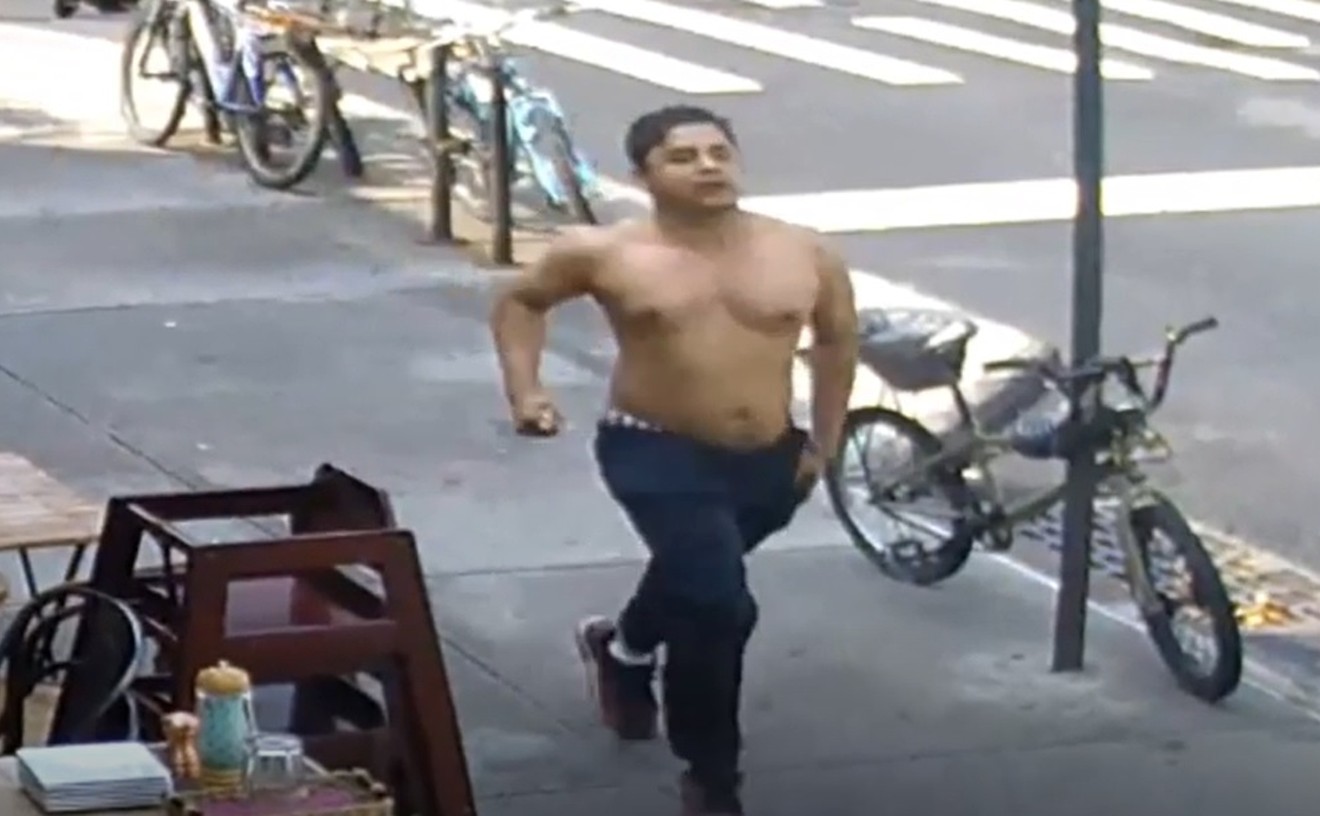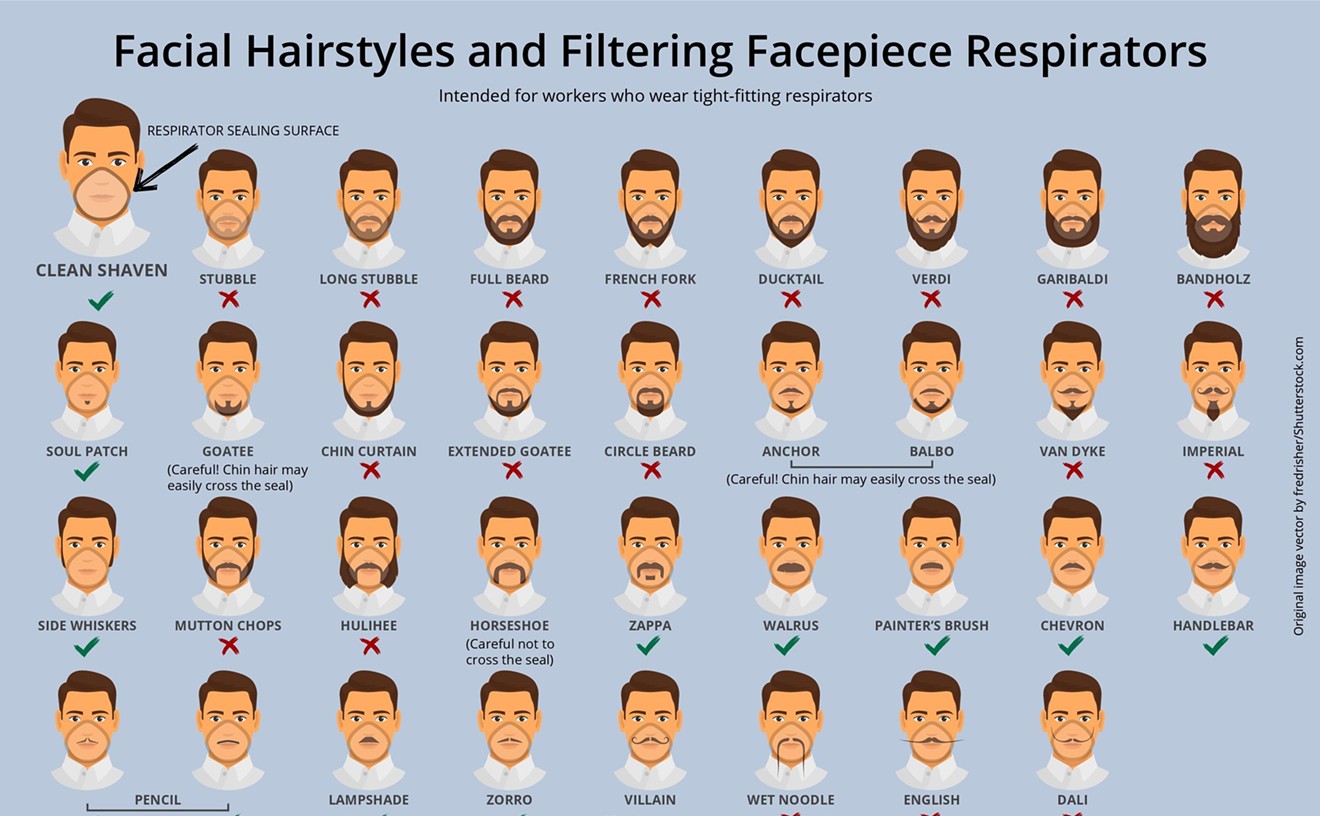Prickly late-fall air rustles through a block of blue-collar homes in Union City, New Jersey, and butterflies swarm 13-year-old Richard Negrín's stomach. It's late November 1979, and soon his dad, Eulalio José, will watch him play football for the first time.
He tugs on the corner of his black and gold Terry Bradshaw jersey and strolls with his father past gray row houses that are dwarfed by New York City's distant, hazy skyline.
They talk about girls while walking to a Buick parked in front of Eulalio's modest home on 10th Street. As Eulalio approaches the driver's door and Richard bends to unlatch the passenger side, a gray Ford Granada with a cherry red roof accelerates through the stop sign at the end of the block.
Black ski masks flash inside the car. There's a spark and a sound like firecrackers popping. Richard falls to the ground. It feels like he was punched in the hip. He's stunned. Deafened.
It's over in seconds. He sits on the sidewalk in a swirl of gun smoke, staring at twisted chunks of metal and shards of glass, trying to decode their meaning. Then he remembers his father.
"Dad?"
The boy's soft voice pierces the eerie silence on the street.
"Dad!"
Richard rounds the car to find Eulalio lying near the rear bumper. Bright crimson blood pours from his mouth and neck, pooling on the cool asphalt. He doesn't speak as Richard grabs him and lifts his head. Something flashes in the father's eyes: relief. His son survived.
At 9:50 a.m., Eulalio José Negrín died in his son's arms. Five bullets had found their mark, severing a major artery in the 37-year-old's neck.
The barrage of MAC-10 rounds, unbeknownst to Richard, was the loudest broadside to date in a war sweeping not only Union City — "Havana on the Hudson" — but also Miami and the island 90 miles south of Florida.
Now, 30 years later, scores of Cuban-Americans in Miami still support the cause and consider the actions of its warriors — including Eulalio José Negrín's killers — justified. The feeling is so strong that dozens in South Florida and beyond have thrown themselves into the most quixotic of campaigns: trying to persuade President Bush to parole a terrorist named Eduardo Arocena, who was convicted of two murders, including that of Eulalio, as well as 32 bombings from Manhattan to Little Havana.
They just might succeed.
Miriam Arocena sits in her nearly empty living room in a small, two-story townhouse in west Kendall, clutching a simple glazed wooden cross made of thin plywood strips, and a clothespin Christ. On the back, scrawled in faded Spanish: "For Eduardo Arocena, from a political prisoner." It was a gift, she says, that a radical Cuban exile being held in Miami had mailed in the midst of her husband's trial.
"Every night, every night I talk to Him. I say, 'I know you will bring him back. I know this,'" says Miriam, now 64 years old, tears welling in her wide, expressive eyes.
Across the table, Dionisio de la Torre, an affable man with a graying goatee and a Bluetooth headset on his ear, explains why he thinks President Bush might consider commuting the sentence of a convicted killer and terrorist.
"We don't support what he did here, but we believe 25 years is enough time," says de la Torre, who owns a vending machine company and has a talk show on Radio Miami International, which broadcasts across Florida and Latin America on shortwave. "We also have the precedent that other people who have done similar or worse crimes have been released by presidents."
It's true. George Washington freed the violent protesters of the Whiskey Rebellion soon after the revolution. Seventy years later, Andrew Johnson pardoned every Confederate soldier. Richard Nixon let off notorious Teamster leader Jimmy Hoffa, and three years later received a get-out-of-jail card himself from Gerald Ford. Bill Clinton was tops in the realm of shady presidential pardons. On his last days in office, he wiped the slate clean for not only heiress Patty Hearst but also Marc Rich, a fugitive financier whose family donated millions to his campaign. More apropos to de la Torre's argument, in 1999 Clinton freed 16 members of FALN, a Puerto Rican terrorist group that set off more then 120 bombs in the States.
This year, a presidential pardon for a Cuban-American could provide a needed push in hotly contested Florida for fellow Republican John McCain.
So for months now, de la Torre and a loose coalition of Miami Cuban groups — more than 45 by his estimate — have gathered on street corners in Little Havana and Hialeah, in front of Versailles Restaurant and in suburban Miami-Dade, handing out laminated cards with Arocena's face under the heading "Liberty and Justice for Arocena." De la Torre even traveled to Puerto Rico this month to meet with Cuban groups to gather support.
The response has been strong. Last month, dozens of motorists stopped at the busy intersection of SW 87th Avenue and Bird Road, studied the cards, signed their names, and handed them to de la Torre, who puffed on a large cigar and sweated in the median.
"We all are in favor of the liberty of Arocena," says Eddy Riquenes Montero, a short middle-age Cuban-American who squints through large glasses in the midday glare. "He's a political prisoner. He has been there 25 years. Isn't that enough time? It's a humanitarian case."
A White House spokesman declines to comment about the campaign, but de la Torre contends 35,000 signed cards have been mailed to President Bush. "I don't mind him having so many years in jail for what he did. But he's 65 now," de la Torre says. "He's sick and he should come home."
On February 26, 1943, Eduardo Victor Arocena Pérez was born in Caibarién, a small town in north-central Cuba with white sand beaches and a natural harbor that bustled with sugar-laden boats. He dropped out of high school at age 16, when the Cuban Revolution catapulted Fidel Castro into power. Soon he was conscripted to work on Caibarién's docks, loading sugar from the nearby mill towns onto boats bound for other Caribbean ports. A gifted athlete, he also began lifting weights and practicing wrestling. He entered local tournaments and quickly rose through the ranks to win the national championship in the 138.5-pound class, a victory that took him from the docks to an athletic tour around the country.
Arocena wrestled in exhibitions at military bases, where, in a place called La Puntilla at the northern tip of Cuba, near the town of Remedios, he watched Russian soldiers building platforms that would trigger the Cuban Missile Crisis.
When the wrestling tour ended, Arocena quarreled with his father and left Caibarién for a government co-op in eastern Cuba. There the political fire that would dominate his life was ignited. He was chosen to train in the Soviet Union as a fighter pilot, but balked. "I did not like Communism," he later recalled in court testimony.
So he returned to his hometown and joined an underground resistance group. According to Arocena, the group — which he declined to name in court testimony — had connections to the United States and trained him to sabotage government buildings, intercept intelligence, and burn sugar fields. Arocena and his co-conspirators were arrested before carrying out any plans, and he was held in Cuban jails for 15 days. Some were executed by firing squad, but Arocena, still a minor, was released.
He returned to work as a stevedore, married his first wife, and started a family in 1962. But as the United States and the USSR played chicken over Cuba's missile sites to the brink of nuclear war, Arocena again entered the resistance, helping surveil the movement of Soviet troops near military bases close to his hometown. He also learned a skill that would be key to his future career as a terrorist: bomb-making.
By the mid-Sixties, Arocena was again feeling heat for his anti-government activity. So much heat that he gathered his young family — his wife, who was pregnant, and their three children, who were two, three, and four years old — and announced his departure. "I told them that ... I would have to leave the country and then try to get them out," he later recalled in court. "They were in agreement with that."
On November 26, 1965, Arocena and another dockworker cleared a small space in a sugar-packed cargo hold of a freighter bound for Morocco. They smuggled some water and food onboard and sealed themselves in before the ship unmoored. The crew discovered them in open water, with Cuba's shoreline still in view, but the Spanish captain took pity and granted them asylum. Arocena spent several months living in Tangiers and Casablanca trying to find a government to take him in. Eventually he took refuge in Madrid.
But he wasn't done traveling. The next year, he posed as a crew member on the SS Independence, bound for New York. With the help of a Presbyterian minister who had once led Arocena's high school in Cuba, Arocena gained political asylum in the United States and moved to Newark, New Jersey.
In 1966, a newly arrived Cuban immigrant named Miriam García-Torrens drove her mother around Newark's crowded streets, looking for a new apartment. A few months earlier, the tiny 22-year-old brown-eyed beauty, her mother Mercedes, and her sister Mercy had fled Holguín, a city of 300,000 and capital of the southeastern Cuban province of the same name.
Inside one of the nicer buildings they visited, a young man was leaning against a wall near the entrance. His serious, stoic eyes locked with Miriam's.
"Mother," the young woman said, grabbing Mercedes's arm after they were inside the apartment. "Mother, did you see that boy? He will be my husband."
In the hallway, the 25-year-old man grabbed his friend by the shoulders and said, "I will marry that girl."
The meeting, perhaps, highlighted the two linchpins of Arocena's personality: his impulsiveness and his burning passion. It also hinted at events to come. He had just received word in the mail a few weeks earlier — soon after arriving in New Jersey — that his first wife in Cuba had ended the marriage. Though he still had four young children in Caibarién, he leapt into a new life in New Jersey with his new passion, Miriam.
Arocena worked first at a stereo equipment company and then as a dockworker, while Miriam raised a quickly growing family that soon included two children, Frank and Lorna. At home he watched baseball and taught Frank karate, which he'd taken up after his wrestling career ended.
"My life in New Jersey was one of peace," Miriam says. "I think it was beautiful."
Though Arocena had left Cuba, he hadn't forgotten his politics or his passionate hatred of Castro. In 1967, he moved to Miami, where for two months he trained in the Everglades with 2,000 other Cubans at secret military camps for an invasion of his homeland. He added automatic weapons and surveillance techniques to the bomb-making skills he had gained on the island.
The invasion never happened, but the training would be useful to Arocena. On September 11, 1974, "Omar" was born.
In March 1980, inside a small room above the Fruit Meat King Supermarket in Newark's Cuban enclave, Eduardo Arocena practiced his deadly and precise secret talent.
His worn, calloused hands carefully molded C-4 explosive like Play-Doh around detonating cords and two electrical blasting caps. He wired the caps to a receiver cannibalized from a remote-control airplane kit and set the frequency to 72.24 megahertz.
With string and black electrical tape, he gingerly secured the bomb inside a box and mounted it onto a pressboard panel with two large, disc-shaped magnets glued to the bottom.
Arocena had spent years honing his bomb-making skills the same way he'd perfected wrestling moves as a boy. He had assembled dozens of these bombs, beginning soon after that September in 1974 when he became fed up with his compadres' blather about overthrowing Castro. Arocena recruited from New Jersey-based Cuban nationalist groups such as Movimiento Insurreccional Martiano and the Cuban Nationalist Movement. He called his new group "Omega 7" — Omega for "the end" in the Greek alphabet, and 7 for the original number of members.
Arocena's bombs would be their main weapon; Americans or foreigners in the United States who maintained relations with Castro's Cuba would be their targets.
One of the first explosions, on February 1, 1975, blew a hole in the Venezuelan consulate in New York City. The next September, Arocena and his followers attacked a Soviet freighter in Port Elizabeth, where Arocena worked.
A litany of targets with varying connections to Cuba followed over the next four years. In early October 1978, Omega 7 blew up a sporting goods store near Madison Square Garden.
On December 29 that same year, just after midnight, Arocena's group planted a bomb in the doorway of Avery Fisher Hall at Lincoln Center. It was just hours after the first New York performance of acclaimed Cuban ensemble Orquesta Aragón. The bomb blew out glass three stories up in the famous theater and caused the orchestra to cancel its remaining Manhattan shows. That same night, they detonated another bomb at the Cuban mission to the United Nations.
After each of the attacks, Arocena's right-hand man, Pedro Remón, or another associate would call television and radio stations to claim responsibility for the attacks in the name of Omega 7 and "Omar."
Arocena would later say the bombings were meant to scare, not kill, but in 1979, his henchman Remón checked a suitcase bomb onto a TWA flight from JFK to Los Angeles. They wanted the airline to cease commercial flights to Havana. Only a premature explosion in a baggage cart on the tarmac saved the passengers onboard the flight from a gruesome end. (Arocena later claimed his group had phoned in a warning.)
In November, Arocena planned the assassination of Eulalio José Negrín — and Remón pulled the trigger. The reason: Negrín belonged to a Cuban-American group that had negotiated with Castro to free 3,000 political prisoners.
A month later, Arocena and Remón were nearly caught while bombing the Soviet mission to the United Nations on East 38th Street in Manhattan. Arocena had built the explosive inside a suitcase. Dressed in raincoats, top hats, and fake mustaches, the pair approached the mission's driveway, lit a fuse, and slid the suitcase down the pavement toward the building. As they calmly walked away, they heard a voice call out, "Hey you!"
A policeman down the street yelled, "Stop!"
Arocena turned toward the cop, but as the officer approached, the bomb exploded, pushing clouds of concrete dust and smoke down the street. In the confusion, they slipped away unnoticed.
Using the bomb he had carefully molded in the Fruit Meat King attic, Arocena planned to finish an important mission. After stalking their prey for six months, he and Remón drove a rental car to the Cuban mission and quickly located a parked car. Remón crept to the front bumper and underneath attached the pressboard's disc-shaped magnets. The bomb held tight.
Just before 9 a.m. on March 25, 1980, the chauffeur arrived. He started the car and headed north. The pair followed, Arocena clutching the remote control in his hands. At East 81st Street, the chauffeur pulled up to the curb in front of a residence — the home of Cuban Ambassador Raúl Roa. Soon Roa would emerge, they thought, and the car would head down the six-lane FDR Drive. Then Arocena would hit the button.
But the plan abruptly fell apart. The driver, trying to wedge the ambassador's car into a tight spot, bumped into the car in front. With an audible clatter, Arocena's carefully crafted bomb bounced to the asphalt. The driver got out to investigate and quickly ran into the house. Moments later, Arocena and Remón watched from their lookout in the rental car as the ambassador emerged with another man and looked at the bomb from a few feet away.
"Do it," Remón whispered. "He's close enough."
Arocena looked up the street. Less than 100 yards away, schoolchildren crowded a playground, filing in for the day's classes. Pedestrians wandered the street. Arocena wavered. He put the remote away.
Though they failed to kill Cuba's ambassador, a few months later Arocena succeeded in orchestrating another murder — a strike against Félix García, an attaché at the same mission. Using the same MAC-10 machine gun that killed Eulalio José Negrín, Remón gunned down García in his car on a New York street September 11, 1980, the sixth anniversary of Omega 7's founding and exactly 21 years before a more infamous blow against peace and security on New York's streets. On the same day, Arocena's group set off bombs at the Mexican consulates in New York City and Miami.
A few months later, Ronald Reagan took over in the White House and the United States entered a new decade of the Cold War. Arocena's campaign of terror seemed far from over. But then Omega 7 made a key misstep that within two years would lead to the arrest of every principal member — except "Omar."
As an early-morning rainstorm swept through the outskirts of Little Havana, a steady stream of water dripped through the ceiling panels and into a cluttered newspaper office.
Most members of the small staff had yet to file in at Replica, a moderate Cuban publication that routinely called for talks with Castro and normalizing relations between Cuba and the United States.
Max Lesnik, the founder and publisher, hadn't come in yet. He was used to being a political target because of his moderate stance — from his youth fighting alongside Castro to his quarrel with the dictator and subsequent ascent in Miami's Cuban community, he always felt the danger. Replica's office was no stranger to bombings, demonstrations, and scare tactics. More than one bomb had exploded near the building, and garbage cans full of burning gasoline had been left on the doorstep.
"I had been in the public life since I was 15," Lesnik says. "Working in the public life in Latin America, you're always in danger."
On this wet morning, in 1983, a janitor arrived and heard the water trickling to the floor. He grabbed a ladder, removed some panels, and shined a flashlight inside. It reflected off something unexpected: wires, molded plastic, and fuses.
There was enough C-4 explosive to kill Lesnik and his staff, demolish the building, and potentially damage a nearby elementary school.
The massive bomb was one of the last examples of Arocena's reign of terror.
The unraveling began in December 1980, when Remón had traveled across the Canadian border with Ramón Sánchez, another Omega 7 member, to bomb a consulate in Montreal. On the way back to New Jersey, the two Cuban-Americans were picked up by the Border Patrol.
An FBI task force headed by an agent named Larry Wack had been tracking Omega 7 for five years — since the first bomb at the Venezuelan consulate — and Sánchez was on their radar. When Wack learned about the Border Patrol's arrest, he also began investigating Remón; that led to Arocena, who had recently moved with his family to Miami and begun working as an insurance salesman.
Wack tracked Arocena for two years between New Jersey and Florida, gathering evidence to link his activities to Omega 7 bombings. In September 1982, the G-man met his quarry face-to-face outside a New York grand jury room, where several Omega 7 members had been called to testify. All pleaded the Fifth, while Arocena flat-out denied any connection to terrorist activities.
The agent took the then-39-year-old bomber aside in the marble hallway. "We've been working on this case a long time," he said. "You should start thinking about cooperating with us."
Arocena didn't respond. But two weeks later, he left Wack a message at his office: He wanted to talk. Less than a week after that, they met at the Jetport Inn near Newark Airport. "I'm here representing Omar and Omega 7," Arocena told Wack. "We want to build a bridge with the government."
The agent warned him it wouldn't be easy. "You can't just forget about eight years of ... bombings and murders and innocent people being injured," he said. Wack laid out his case: Phone records linked him to Remón, Sánchez, and every other known member of Omega 7. A car rented by Arocena got a parking ticket across from the Cuban mission hours before Félix García was gunned down. And he had been seen returning the rental car after the bombings at the Mexican consulate.
Arocena made no promises but agreed to meet the next day. After joining Wack at a nearby diner and eating a cheeseburger for breakfast, he invited the agent back to his hotel room. Then he dropped a bombshell: "Yes," he said into a tape recorder. "I am Omar."
Arocena then narrated the story of Omega 7, from its founding in 1974 through all of the major bombings in New York and New Jersey and the murders of Negrín and García. He wouldn't discuss anything that happened in Florida, to protect the names of his operatives there.
The agent asked if he was ever concerned about hurting the police officers or firemen who showed up to disarm or investigate the bombs.
"That's all part of the war," Arocena coolly replied.
Wack worried about reprisals from Remón and other associates. On the way out of the hotel, Arocena grabbed the door and wiped the knob vigorously with the inside of his suit coat. "I am wiping fingerprints off," he explained.
To escape immediate arrest, the Omega 7 leader offered the FBI a generous gift: 600 to 800 pounds of Omega 7's C-4. Theagents agreed to let him return to Florida to help them find the explosives. With Wack and another agent in tow, he flew back to Miami September 28. The plan called for him to turn in the bomb-making materials and return to New York to talk with prosecutors.
For three days, Arocena worked with the bureau. But on October 1, he phoned Wack with ominous news: Remón had hired a hit man to kill him. Arocena was going to run.
For the next 10 months, he skulked around Little Havana in fake beards and wigs while planning several attacks, including the botched strike on Replica. Strangely, throughout his time as a fugitive, he called Wack at home in New York dozens of times from pay phones, often confiding about his bombing plots, complaining about his life on the lam, and bemoaning what he saw as an unwillingness by the U.S. government to confront Castro. Wack recorded the calls.
The last conversation came July 21, 1983, and illustrated both the anti-Communist fervor and the disconnect from reality that had defined Arocena's life as Omar. For half an hour, the agent pleaded with the Omega 7 chief to turn himself in, protesting that the FBI wasn't his enemy. Arocena resisted, complaining about "liberals" and the U.S. Congress and Castro: "There's going to be a war," he said.
"You know, you're being ... stubborn, Eddie," Wack said at the end of the conversation.
"No," Arocena replied. "I am a fighter."
The next day, the FBI arrested Arocena in his Little Havana hideout. Agents found an arsenal of illegal weapons: machine guns, semiautomatic pistols, and rifles — all with silencers — bomb-making components, knives, and the same remote-control transmitter used in the attempted assassination of Ambassador Roa. They also found Omega 7 stickers, stencils, and written statements, as well as the wigs and fake beards Arocena had worn while on the lam for 10 months.
In the six-week jury trial during fall 1984, Arocena faced a staggering mountain of evidence: the taped confession in the New Jersey hotel room, the recorded phone calls to Wack, and the testimony of several former Omega 7 members.
Arocena mounted a bizarre defense. He claimed the FBI had kidnapped and drugged him to obtain his taped confession. The phone calls to Wack had been fabricated and the arsenal in his Little Havana hideout had been planted by the government. Arocena, who had spoken fluent English while describing his life as Omar on tape and in phone calls to Wack, also claimed he could barely speak English and relied on an interpreter throughout the trial.
He repeatedly complained the government had erased his memory. "Under your direction, they are still putting drugs in my food. My mind is being destroyed," Arocena said from the stand. "They are trying to erase from me many things, because you don't want me to tell things here the way they are."
The jury convicted him on 25 counts — for Negrín and García's murders as well as 23 weapons charges. The judge sentenced him to consecutive life terms plus 35 years in prison. Even as Arocena denied every charge, he called the murder of the Cuban envoy justified: "If he is a Communist, according to my way of thinking, it is right that he was executed."
Asked about Negrín's murder in front of the man's son, Arocena said, "I don't think it should have been carried out that way. But I do think that if he was a Communist, he should have been executed anyway."
It's been 25 years since Miriam Arocena's husband was sentenced to life in the federal pen (he later received another 20 years from a judge in Miami for his bombings throughout the Magic City), and the indignities have been great for his slight, tanned wife. Only eight times in that quarter-century has she been able to afford trips to visit Eduardo. A few times a month, she gets five minutes on the phone with him.
He's been moved several times, but never closer than 500 miles from Miami. Today he lives in a new federal prison in Terre Haute, Indiana, more than 1,100 miles from his wife. The warden, Brian R. Jett, denied a request to speak with him, saying the interview would "jeopardize security and disturb the orderly running of the institution." Eduardo is now 65 years old and, according to his wife, struggling with diabetes and high blood pressure.
Miriam firmly asserts she knew nothing of her husband's anti-Castro violence. Mostly, she dismisses the question of his culpability. "I have been asked that many times, but let me tell you," she says, punctuating her next words with slaps on her kitchen table, "I don't know Omega 7.... I know Eduardo, I miss him, my children miss him."
(Remón, Arocena's right-hand man, was sentenced to 10 years in prison in 1986. After his release, he joined Luis Posada Carriles and two others in an attempt to assassinate Castro at a Panama summit meeting in 2000; he spent four years in prison there before gaining a pardon and returning to Miami in 2004.)
Richard Negrín takes a different view from Miriam. The 13-year-old who narrowly avoided the MAC-10 rounds that felled his father went on to live something of an American dream after that tragic fall day. "I really threw myself into football after my dad's murder, because otherwise I would have gone insane with anger," Richard says.
He was a talented player with a chip on his shoulder who ended up an All-American at Wagner College and played two years as a reserve for the Cleveland Browns and New York Jets. He earned a law degree from Rutgers after his playing career ended and now works as the general counsel for Aramark, the Philadelphia-based corporate services giant.
He remembers taking the stand during the trial and describing his father's murder. "I was 18 years old, a freshman in college, and looked at him and told him what his group had done," Negrín says of Arocena. "I looked at him throughout and he sat there emotionless, with a cold, empty stare in his eyes."
So now he's unequivocal about the clemency petition.
"I think he's lucky to have a life in prison, because years later we have a 'kingpin law' where he would have faced the death penalty for orchestrating my dad's murder," Negrín says. "He was a clear and present danger to people of the United States. It was a rampage of violence that at the time was unprecedented in the United States."











